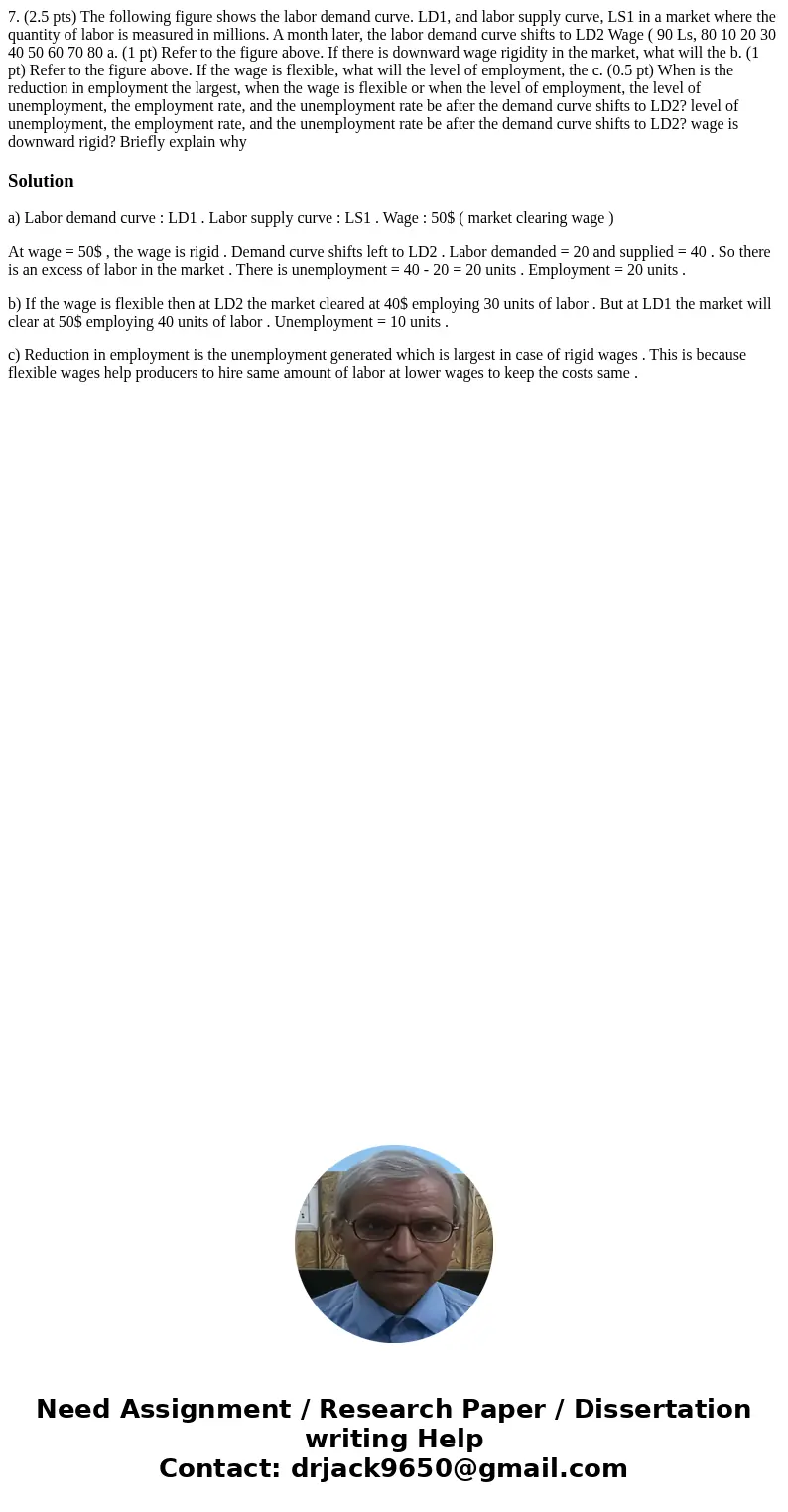7 25 pts The following figure shows the labor demand curve L
7. (2.5 pts) The following figure shows the labor demand curve. LD1, and labor supply curve, LS1 in a market where the quantity of labor is measured in millions. A month later, the labor demand curve shifts to LD2 Wage ( 90 Ls, 80 10 20 30 40 50 60 70 80 a. (1 pt) Refer to the figure above. If there is downward wage rigidity in the market, what will the b. (1 pt) Refer to the figure above. If the wage is flexible, what will the level of employment, the c. (0.5 pt) When is the reduction in employment the largest, when the wage is flexible or when the level of employment, the level of unemployment, the employment rate, and the unemployment rate be after the demand curve shifts to LD2? level of unemployment, the employment rate, and the unemployment rate be after the demand curve shifts to LD2? wage is downward rigid? Briefly explain why 
Solution
a) Labor demand curve : LD1 . Labor supply curve : LS1 . Wage : 50$ ( market clearing wage )
At wage = 50$ , the wage is rigid . Demand curve shifts left to LD2 . Labor demanded = 20 and supplied = 40 . So there is an excess of labor in the market . There is unemployment = 40 - 20 = 20 units . Employment = 20 units .
b) If the wage is flexible then at LD2 the market cleared at 40$ employing 30 units of labor . But at LD1 the market will clear at 50$ employing 40 units of labor . Unemployment = 10 units .
c) Reduction in employment is the unemployment generated which is largest in case of rigid wages . This is because flexible wages help producers to hire same amount of labor at lower wages to keep the costs same .

 Homework Sourse
Homework Sourse